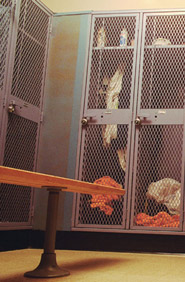Methicillin-Resistant Staphylococcus aureus is known as MRSA
Staphylococcus aureus, often referred to as “staph”, is a common type of bacteria that can live harmlessly on the skin or in the nose of 25 to 35 percent of healthy people. 
Occasionally, staph can cause an infection. Most of these infections can be treated, but some are resistant to common treatments. These resistant bacteria are called methicillin-resistant staphylococcus aureus or MRSA.
Who can get MRSA?
Anyone can get MRSA. Outbreaks of MRSA can happen within certain groups, such as children in child care, prison inmates, and men who have sex with men. It is also becoming more common in student-athletes playing close contact sports, like football, wrestling, and lacrosse.
What does MRSA look like?
It begins as a pimplelike lesion that has popped, looking like a spider bite, a boil, or an infected mosquito bite. It then progresses to a painful, swollen, red area, and /or has pus or other drainage.
How can I protect myself from getting MRSA?
- Keep your hands and body clean
- Cover cuts and scrapes (especially those that are draining)
- Don’t share personal items
- Sanitize clothing and linens
- Clean workout equipment before and after use
- Do NOT use whirlpools, hydrotherapy pools, cold tubs, swimming pools, and other common tubs (if open wound is present)
- Get tested if you think that you may have MRSA
Athletes and MRSA
Staph” infections, including MRSA, have most often been connected with outbreaks in health-care facilities, but they are becoming more common in student-athletes playing close contact sports, such as football, wrestling, lacrosse, and others.
Anyone, including coaches, staff, family members, or others who come into contact with an infected person can contract the infection.
More Information on Athletes and MRSA
Additional Resources